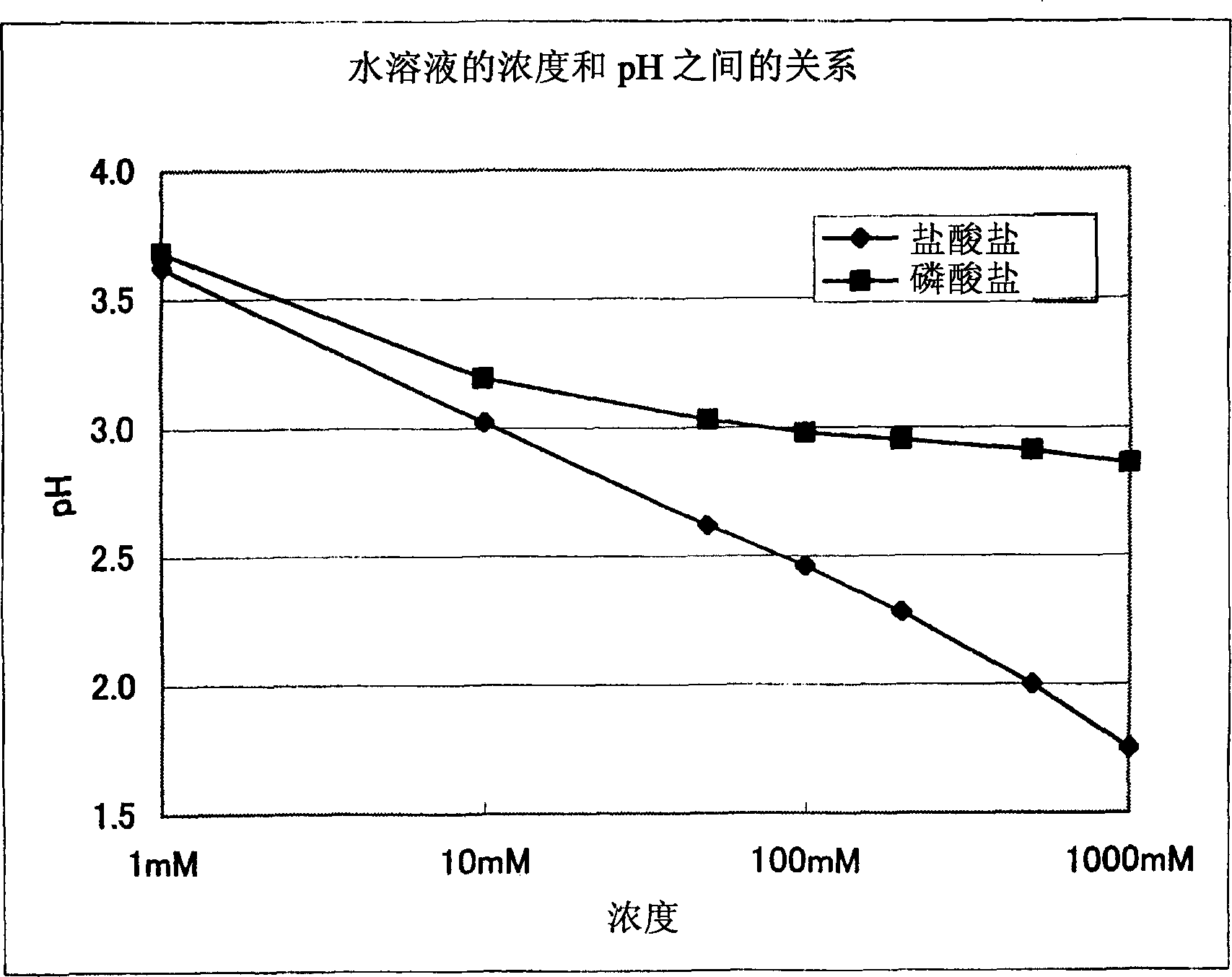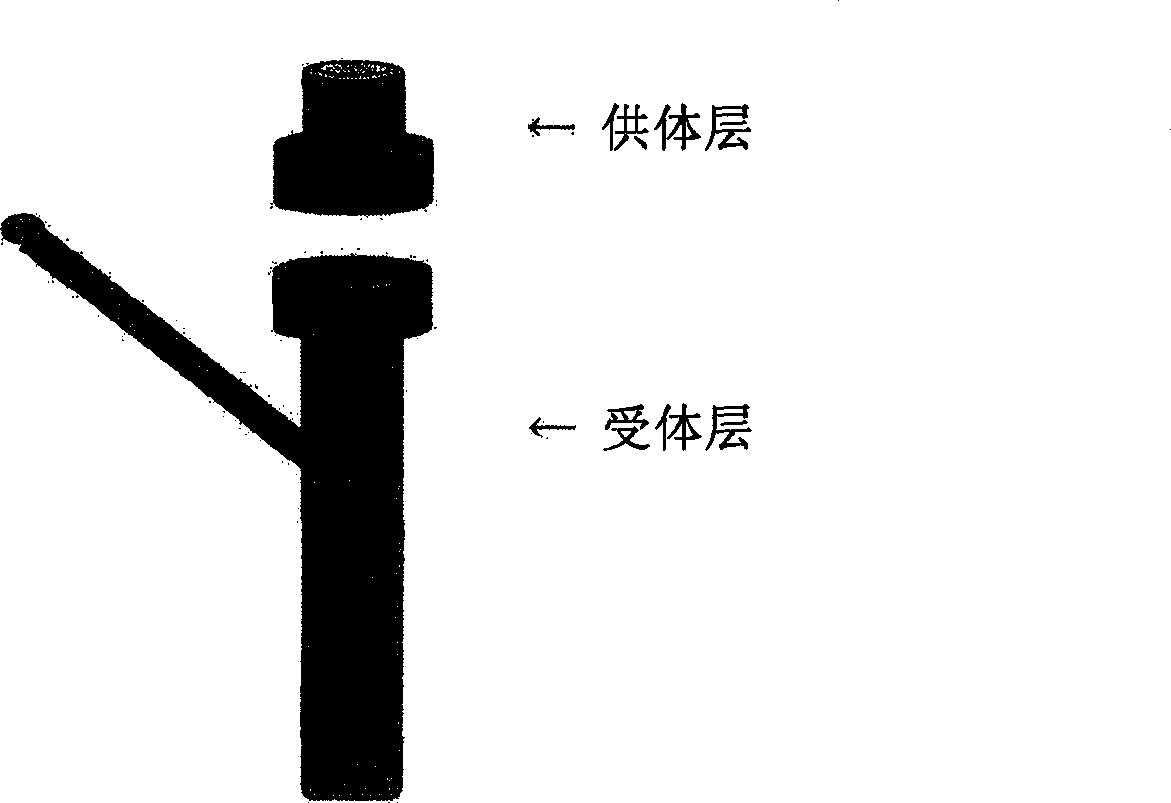5-aminolevulinic acid phosphate, method for producing the same and use thereof
A technology of aminolevulinic acid phosphate and aminolevulinic acid, applied in the directions of botanical equipment and methods, chemical instruments and methods, preparation of organic compounds, etc., can solve the problem of not separating 5-aminolevulinic acid nitrate, The color of the fruit is not bright enough, the nozzle of the sprayer is blocked, etc., to achieve the effect of excellent permeability, excellent heat resistance, and high decomposition temperature
- Summary
- Abstract
- Description
- Claims
- Application Information
AI Technical Summary
Problems solved by technology
Method used
Image
Examples
Embodiment 1
[0099] Preparation of 5-aminolevulinic acid phosphate
[0100] 180 ml of strongly acidic ion exchange resin (AMBERLITE IR 120B Na, manufactured by Japan Organo Co., Ltd.) was loaded into the column. The used ion exchange resin is an ion exchange resin converted from sodium ion type to hydrogen ion type through hydrochloric acid treatment. Then, 20.00 g (119 mmol) of 5-aminolevulinic acid hydrochloride was dissolved in 1000 ml of ion-exchanged water, and the solution was passed through the column, and then 1000 ml of ion-exchanged water was passed through the column. Next, 1N ammonia water was slowly passed through the column, and 346ml of yellow eluent was collected. The collected eluate was added to 16ml, 85% phosphoric acid (H 3 PO 4 , 238mmol), and concentrated using an evaporator. 400 ml of acetone was added to the concentrate, vigorously stirred with a stirrer, and then left to stand at 4°C for 16 hours. The precipitated solid was recovered by suction filtration, and...
Embodiment 2
[0112] Preparation of 5-aminolevulinic acid (di-n-butyl phosphate) salt
[0113] 180 ml of strongly acidic ion exchange resin (AMBERLITE IR 120B Na, manufactured by Japan Organo Co., Ltd.) was loaded into the column. The used ion exchange resin is an ion exchange resin converted from sodium ion type to hydrogen ion type through hydrochloric acid treatment. Then, 20.00 g (119 mmol) of 5-aminolevulinic acid hydrochloride was dissolved in 1000 ml of ion-exchanged water, and the solution was passed through the column, and then 1000 ml of ion-exchanged water was passed through the column. Next, 1N ammonia water was slowly passed through the column, and 321 ml of yellow eluent was collected. The collected eluate was added to 50.00 g (238 mmol) of di-n-butyl phosphate, and concentrated using an evaporator. 400 ml of acetone was added to the concentrate, and stirred vigorously with a stirrer, and then the mixture was allowed to stand at -25°C for 16 hours. The precipitated solid wa...
Embodiment 3
[0117] Odor determination of 5-aminolevulinic acid phosphate
[0118] 5 subjects directly smelled the aqueous solution of 5-aminolevulinic acid phosphate prepared in Example 1 (a mixture of column eluate and phosphoric acid) and its solids, and evaluated their odors according to the following criteria. The results are shown in Table 1.
[0119] evaluation standard:
[0120] 0: No smell.
[0121] 1: Smelly but not unpleasant.
[0122] 2: Bad smell.
PUM
 Login to View More
Login to View More Abstract
Description
Claims
Application Information
 Login to View More
Login to View More - R&D
- Intellectual Property
- Life Sciences
- Materials
- Tech Scout
- Unparalleled Data Quality
- Higher Quality Content
- 60% Fewer Hallucinations
Browse by: Latest US Patents, China's latest patents, Technical Efficacy Thesaurus, Application Domain, Technology Topic, Popular Technical Reports.
© 2025 PatSnap. All rights reserved.Legal|Privacy policy|Modern Slavery Act Transparency Statement|Sitemap|About US| Contact US: help@patsnap.com



